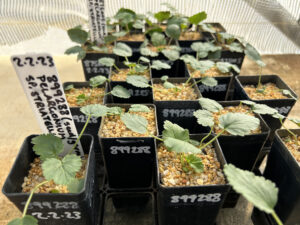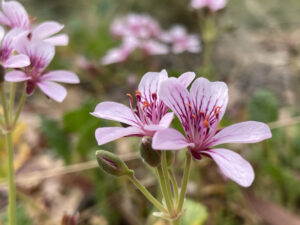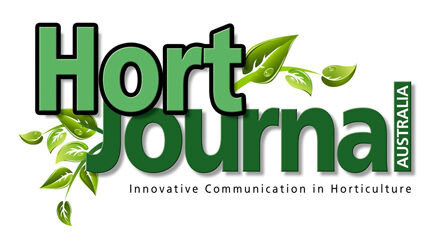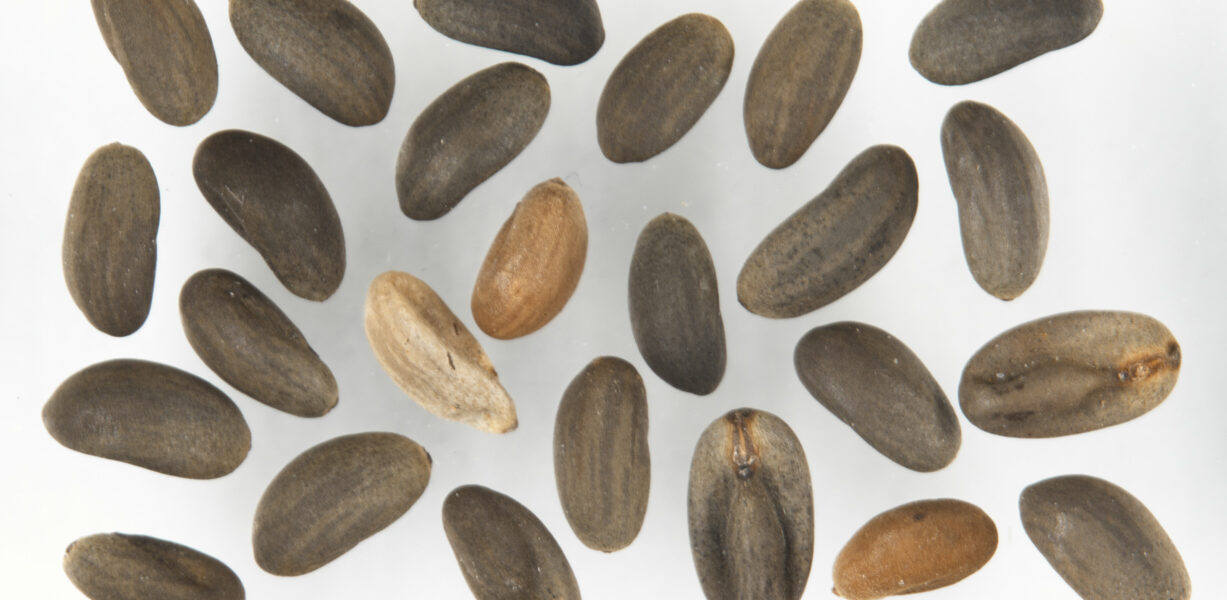The Rare Bloom Project – building horticultural knowledge for conservation
By Zoe Knapp and Amelia Stevens
The Rare Bloom Project™ is a three-year program delivered through a partnership between Botanica by Air Wick and the World Wide Fund for Nature Australia (WWF) in collaboration with the Australian Seed Bank Partnership (ASBP). It aims to improve conservation outcomes for 120 Australian native wildflowers from fire-affected areas through seed banking, germination research and restoration.
Through this program, the Australian National Botanic Gardens (ANBG) in Canberra is supporting conservation of the threatened Omeo Storks-bill, Pelargonium sp. Striatellum (G.W. Carr 10345), by investigating and documenting its seed germination and vegetative propagation requirements.
The ANBG is focused entirely on the propagation, display and conservation of Australian flora, and harbours a wealth of horticultural expertise on our native species. This, combined with expertise in the ANBG’s National Seed Bank and Centre for Australian National Biodiversity Research (a joint venture with the CSIRO), enables the ANBG to contribute to holistic conservation approaches for threatened plant species, from species identification through to seed germination, plant production, and building ex situ ‘insurance’ collections of plants and seeds.
Omeo Storks-bill is a small herb in the Geranium family, with leaves in basal rosettes and clusters of pale pink flowers produced from October to March, reminiscent of other Pelargonium species. The species has a restricted distribution, known from only four locations in NSW and one in Victoria. It is listed as Endangered both nationally (Environment Protection and Biodiversity Conservation Act 1999 (EPBC Act)) in New South Wales (Biodiversity Conservation Act 2016), and Vulnerable in Victoria (Flora and Fauna Guarantee Act 1988).
Regardless of the species threat status and beauty, its propagation methods have not previously (to our knowledge) been documented. Below, we outline how this species can be propagated by seed (in vitro and in the nursery), plant division, and softwood cuttings.
Seed collection
In January 2023, the National Seed Bank coordinated two field trips targeting one of the NSW populations to collect seeds for conservation banking and germination trials. Two new collections were made, in total 362 seeds were collected. The National Seed Bank now holds seven collections of Omeo Storks-bill representing three of the four known NSW populations.

Seed viability and germination
While the seeds of many horticultural varieties of Pelargonium germinate readily, many native Australian species have seed dormancy mechanisms, which prevent seeds from germinating until environmental conditions are suitable to support seedling development. Previous research on related species indicated that Omeo Storks-bill would likely have a physical seed dormancy mechanism. Physically dormant seeds have hard seed coats and do not absorb water which is necessary for germination to occur. To test the viability of seed collections and overcome this, seeds were carefully nicked with a scalpel to break the seed coat, without damaging the embryo inside. Seeds were placed onto sterile 1% water agar in 90mm petri dishes and into a laboratory incubator at 20/10, 12hr photoperiod. The temperature conditions aimed to reflect the colder environment where this species naturally occurs. Some seeds were left intact as a control. While less than 10% of the control seed germinated, nicked seeds were extremely quick to germinate, achieving up to 100% germination in 3 days. This confirmed that this species has physically dormant seeds and the collections at the National Seed Bank are viable.
Nursery seed germination
While carefully nicking the seedcoat successfully alleviated seed dormancy in the laboratory, it is a tricky and time-consuming method that can be difficult to replicate in a horticultural setting. Therefore, the ANBG Nursery ran a small trial to test seed germination rates following four pre-treatment methods to include more easily applicable methods to alleviate physical dormancy.
1. Nicking the seed with a scalpel blade under a microscope;
2. Rubbing the seed with sandpaper to remove some of the seed coat;
3. Immersion in 90oC water for three minutes, followed by soaking in room temperature water for 30 hours;
4. Control, no treatment applied.
All seeds were then sown in rectangular punnets, in 7:1 mix of Perlite: Coir potting media. Seeds began germinating within 14 days, and the total number of germinated seedlings was counted after 23 days.
Similar to the seed bank trial 93% of seeds germinated after nicking of the seed coat with a scalpel. Rubbing the seeds with sandpaper yielded 66% and no seeds germinated after hot water immersion or no treatment (control).

Vegetative propagation – division and cuttings
Plants naturally occur in clonal colonies, with individual plantlets connected by branching rhizomes (underground stems). This means plants can be successfully propagated by division. Plants are carefully upended then divided into portions before being separately re-potted into separate containers.
The ANBG also propagated this species from softwood cuttings of new tender growth. Cuttings were trimmed to approximately 70mm long with a third of the leaves left at the top of the cutting, then dipped in 3g/L IBA Clonex® rooting hormone gel, and placed into punnets of potting media (7:1 mix of Perlite:Coir). Punnets were maintained at approximately 20oC in a propagation house with bottom heat and overhead misters, and hand watered twice a day. This method achieved a 50% strike rate within two months.
Conclusions and next steps
Perhaps surprisingly for a restricted and threatened species, Omeo Storks-bill was relatively straightforward to propagate, both vegetatively and from seed. As a result, more than 50 plants were propagated for planting in the gardens. These will become a back-up ‘insurance’ population for future research and conservation efforts.
More information about The Rare Blooms Project and its amazing conservation outcomes is online at www.seedpartnership.org.au/initiatives/bushfire-recovery/the-rare-bloom-project.
Zoe Knapp
Conservation Manager
Australian National Botanic Gardens
E: Zoe.knapp@dcceew.gov.au
Amelia Stevens
A/g Curator
National Seed Bank
Australian National Botanic Gardens
E: Millie.Stevens@dcceew.gov.au
Main photo: Omeo Storks-bill seeds photographed in the National Seed Bank (Image: John Fitz Gerald)

